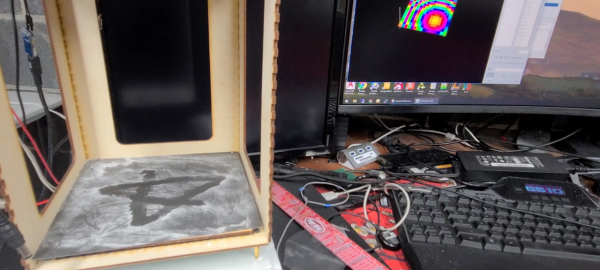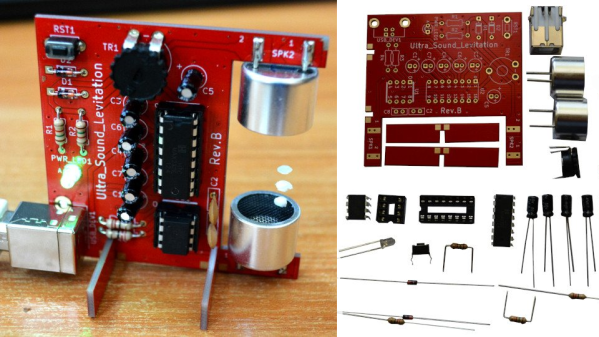The spooky season is upon us, and with it the race to come up with the geekiest way to scare the kids. Motion-activated jump-scare setups are always a crowd-pleaser, but kind of a cheap thrill in our opinion. So if you’re looking for something different for your Halloween scare-floor, you might consider “spirit writing” with ultrasound.
The idea that [Dan Beaven] has here is a variation on the ultrasonic levitation projects we’ve seen so many of over the last couple of years. While watching bits of styrofoam suspended in midair by the standing waves generated by carefully phased arrays of ultrasonic transducers is cool, [Dan] looks set to take the concept to the next level. Very much still a prototype, the setup has a 256-transducer matrix suspended above a dark surface. Baking powder is sprinkled over the writing surface to stand in for dust, which is easily disturbed by the sound waves reflecting off the hard surface. The array can be controlled to make it look like an unseen hand is tracing out a design in the dust, and the effect is pretty convincing. We’d have chosen “REDRUM” rather than a pentagram, but different strokes.
[Dan] obviously has a long way to go before this is ready for the big night, but the proof-of-concept is sound. While we wait for the finished product, we’ll just file this away as a technique that might have other applications. SMD components are pretty small and light, after all — perhaps an ultrasonic pick-and-place? In which case, sonic tweezers might be just the thing.
Continue reading “Ultrasonic Array Powers This Halloween Spirit Writer”

















